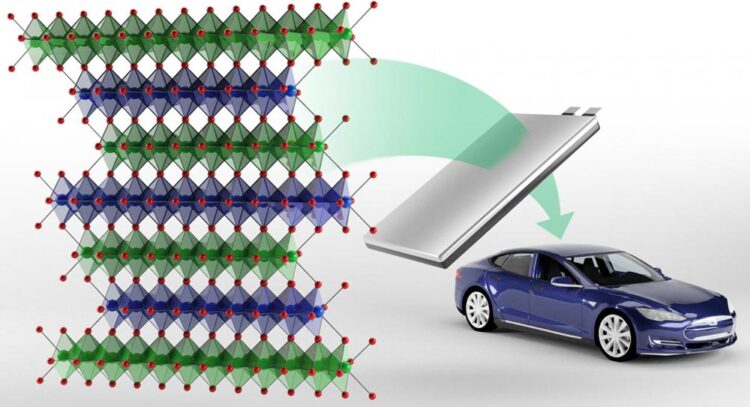Oak Ridge National Laboratory researchers have developed a new family of cathodes with the potential to replace the costly cobalt-based cathodes typically found in today’s lithium-ion batteries that power electric vehicles and consumer electronics.
The new class called NFA, which stands for nickel-, iron- and aluminum-based cathode, is a derivative of lithium nickelate and can be used to make the positive electrode of a lithium-ion battery. These novel cathodes are designed to be fast charging, energy dense, cost effective, and longer lasting.
With the rise in the production of portable electronics and electric vehicles throughout the world, lithium-ion batteries are in high demand. According to Ilias Belharouak, ORNL’s scientist leading the NFA research and development, more than 100 million electric vehicles are anticipated to be on the road by 2030. Cobalt is a metal currently needed for the cathode which makes up the significant portion of a lithium-ion battery’s cost.
Cobalt is rare and largely mined overseas, making it difficult to acquire and produce cathodes. As a result, finding an alternative material to cobalt that can be manufactured cost effectively has become a lithium-ion battery research priority.
ORNL scientists tested the performance of the NFA class of cathodes and determined they are promising substitutes for cobalt-based cathodes, as described in Advanced Materials and the Journal of Power Sources. Researchers used neutron diffraction, Mossbauer spectroscopy and other advanced characterization techniques to investigate NFA’s atomic- and micro-structures as well as electrochemical properties.
“Our investigations into the charging and discharging behavior of NFA showed that these cathodes undergo similar electrochemical reactions as cobalt-based cathodes and deliver high enough specific capacities to meet the battery energy density demands,” said Belharouak.
Although research on the NFA class is in the early stages, Belharouak said that his team’s preliminary results to date indicate that cobalt may not be needed for next-generation lithium-ion batteries.
“We are developing a cathode that has similar or better electrochemical characteristics than cobalt-based cathodes while utilizing lower cost raw materials,” he said.
Belharouak added that not only does NFA perform as well as cobalt-based cathodes, but the process to manufacture the NFA cathodes can be integrated into existing global cathode manufacturing processes.
“Lithium nickelate has long been researched as the material of choice for making cathodes, but it suffers from intrinsic structural and electrochemical instabilities,” he said. “In our research, we replaced some of the nickel with iron and aluminum to enhance the cathode’s stability. Iron and aluminum are cost-effective, sustainable and environmentally friendly materials.”
Future research and development on the NFA class will include testing the materials in large-format cells to validate the lab-scale results and further explore the suitability of these cathodes for use in electric vehicles.
###
Additional researchers on the journal articles include Nitin Muralidharan, Rachid Essehli, Raphael Hermann, Ruhul Amin, Charl Jafta, Junje Zhang, Jue Liu, Zhijia Du, Harry Meyer, Ethan Self, Jagjit Nanda and Yaocai Bai.
The work was sponsored by DOE’s Office of Energy Efficiency and Renewable Energy Vehicle Technologies Office.
ORNL is managed by UT-Battelle for the U.S. Department of Energy’s Office of Science, the single largest supporter of basic research in the physical sciences in the United States. DOE’s Office of Science is working to address some of the most pressing challenges of our time. For more information, please visit https:/







